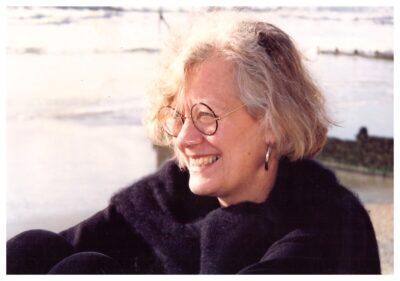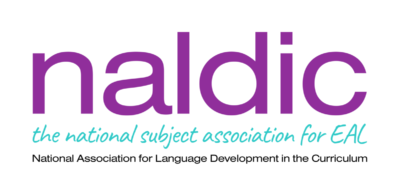NALDIC’s friend, Raymonde Sneddon, pays tribute to Hilary Hester (1935-2024)

Hilary Hester’s name is familiar to all those who have taught bilingual children.
From the late 1960s till the 1990s, working at the ILEA’s Centre for Urban Education Studies (CUES) and at the Centre for Language in Primary Education (CLPE, later renamed Centre for Literacy in Primary Education), and on Schools Council-funded projects, jointly with colleagues, Hilary transformed the approach to teaching bilingual pupils in mainstream schools.
In a context in which new arrivals to the UK were frequently taught in separate units within schools or in withdrawal groups, and by teachers whose experience was of teaching English as a Foreign Language, Hilary developed a pedagogy more appropriate for children developing their second or additional language in a context in which it was spoken all around them.
I first met Hilary socially when her husband John Ives, a colleague and friend of my husband Peter, brought her to our house for dinner in the late 1970s. I was a very new teacher in Hackney enjoying working with bilingual children from many different communities, but much in need of advice and guidance. In the late 1970s, I was working in a context in which bilingual learners were still frequently grouped with children with learning difficulties, where bilingualism in community languages was viewed as a handicap and discouraged, and children were given additional support outside the classroom, missing important curriculum content.
Meeting Hilary remains the most significant point in my life as a teacher
In 1980 I joined Hilary’s curriculum development course Second Language in the Primary Classroom Project (SLIPP) at CUES, which she ran from 1975. In 1982 she invited me to join the Language in the Multicultural Primary Classroom Project (LMPC). The Schools Council project was based at the Institute of Education and lasted two years. It involved action research by seventy-six teachers in four regional centres: Bradford, Haringey, the ILEA and South Glamorgan. Groups met for two afternoons a fortnight with regional and national conferences to bring us together.
In the introduction to the book that Hilary wrote about the project with Carolyn Steedman, she explains the pedagogical transformation she was aiming for:
“The aim of the project was to explore ways of working in multilingual classrooms to support the language development of both bilingual children and the children who speak English as their first language. The emphasis on all children in multilingual classrooms made this different from earlier language projects in that it was looking at common as well as particular aspects of first and second language development, and the kinds of interaction between children and adults in classrooms which supported language development.”
“What was new was the attempt to work with a focus on language across a curriculum that reflected the cultural diversity of the Project schools and classrooms and was appropriate for a changing multicultural society.”
(Hester, H. and Steedman, C., 1985, Multilingual Primary Classrooms: Children and Teachers Learning Together).
The publication of the book was cancelled when the Schools Council was abolished but the very popular Stories in the Multilingual Primary Classroom was published by the ILEA in 1983, documenting the practice of colleagues on the LMPC project.
The focus on action research was inspiring and, at the time, I greatly enjoyed the course and the project, learning to observe, explore and build on what was really happening in my classroom, gaining the confidence to try new ideas, to develop new relationships with children, their families and communities.
As I reflect back now on my work as a teacher, teacher educator and researcher, I realise the huge impact Hilary’s work had on my work. All the ideas I developed in the classroom and beyond originated from that period. As colleagues on the course, we shared and tried out and developed each other’s ideas. We learned close observation of children’s interactions, to listen to children, to organise group work effectively, to plan ahead and analyse the language demands of activities, to appreciate the impact on children of bringing first languages into the classroom, to learn how to build on children’s experiences in the community.
Like many teachers I have met whose practice was inspired by her work, I feel very privileged to have known Hilary and owe her a great debt of gratitude for both the professional advice throughout my career and her lasting friendship.
About Hilary
Hilary Hester Ives was born Hilary Shreeves in 1935 and educated in Guildford, Surrey. She gained her teacher’s certificate at Whiteland in 1955. After teaching in a Reading primary school, she moved to Ethiopia with her family where she taught English and social sciences in secondary schools in Addis Ababa.
Hilary returned to the UK in 1964 and taught in primary schools until 1966. Her long in-service training career started in 1967 when she was seconded to the Schools Council Project English for Immigrant Children. Having completed an MA in Linguistics for Language Teaching at Lancaster University in 1971, Hilary moved to the ILEA’s Centre for Urban Educational Studies (CUES) where she remained until 1986, working on a range of projects all focused on the language of pupils in multilingual classrooms
From 1971 she was the tutor in charge of the RSA certificate for Teaching English as a Second Language in Multicultural Schools.
From 1975 to 1979 Hilary led the curriculum development project Second Language in the Primary Classroom Project (SLIPP).
From 1982 to 1984 Hilary was seconded once more to the Schools Council to direct the Language in the Multicultural Primary Classroom project based at the Institute of Education.
In 1986 Hilary left CUES to join CLPE where she worked until her retirement.
At CLPE all of Hilary’s work ensured that the needs and impact of bilingual pupils in the mainstream classroom were addressed.
Hilary worked closely at CLPE with Myra Barrs and colleagues in working groups to develop methods of formative assessment and record-keeping for children’s language development in the curriculum. The Primary Language Record was extensively piloted and first published in 1988 and widely used in the late 1980s and 1990s.
In 1990 Hilary published her famous Stages of English Learning (in Patterns of Learning, CLPE). She envisioned these as a replacement for the Four Stages of English Learning used for the ILEA census, as a formative tool “to guide teachers in observing a child’s development in learning a new language”. She was also the lead author of the Primary Learning Record (1993) which developed record-keeping principles for use across the primary curriculum.
At the beginning of lockdown in 2020 Hilary had a serious fall on the stairs in her house and moved to a care home in Kentish Town. She never recovered mobility and developed Alzheimer’s. I last went to see her on 31st March: she didn’t recognise me but knew I was a friend and was very gracious. Hilary died peacefully on 19th May 2024, in a care home in Hastings, to which she had moved six weeks previously to be close to her son. She is survived by her children Simon and Siân, four grandchildren, five great-grandchildren, two step-grandchildren and two step-great-grandchildren.



